Bayreuth, the capital of Upper Franconia in Germany, is beautifully laid out with sandstone streets, baroque architecture and impressive palaces. Arguably, it’s one of the great cultural centers of Europe. The foundations were laid in the 18th century by Margravine Wilhelmine, the favorite sister of King Frederick the Great, who invited the finest artists, poets, composers, and architects to court. The period reaped some eye-catching buildings including the Margravial Opera House which lured Richard Wagner, who sought a suitable venue to stage his works at the time, to Bayreuth. The composer later had his own opera house built and the rest, as they say, is history. To this day some 60,000 opera lovers attend the annual Wagner Festival, putting Bayreuth firmly on the musical map of the world.
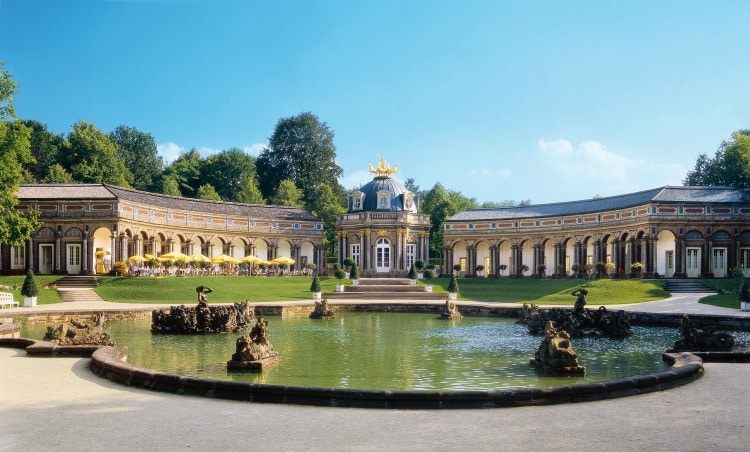
Wagner’s Legacy
Each year in July and August, opera fans converge on the “Grünen Hügel” (Green Hill) to enjoy Wagner’s works in the city where they were celebrated. The atmosphere and the acoustics in the festival hall built to Wagner’s own plans make performances truly special. The composer himself conceived and promoted the idea of a dedicated festival to showcase his works such as the monumental Ring cycle, Parsifal and others.
The Richard Wagner Festspiele is one of the great events of the music world and many famous musicians, singers, and conductors have performed there. Well known composers and authors have visited and attended the performances including Tchaikovsky, Debussy, Mahler, Mark Twain, and George Bernard Shaw.
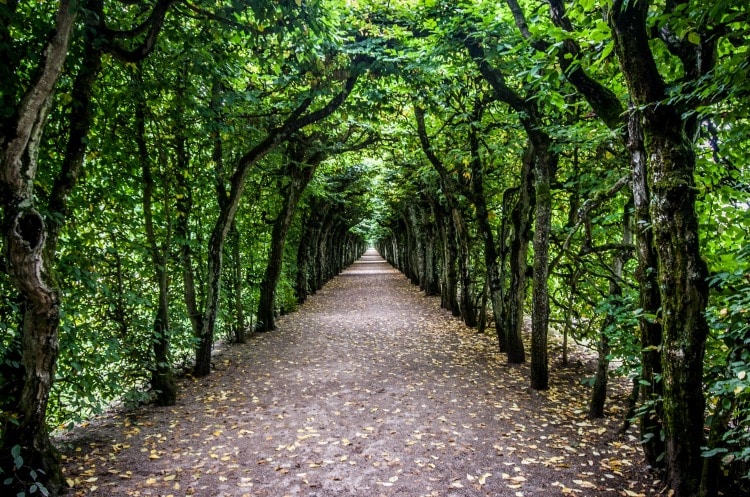
Richard Wagner Museum – Haus Wahnfried
In the early 1870s, King Ludwig II, Wagner’s devoted patron, gave the composer the funds to build Haus Wahnfried, a neo-classical villa on the northern edge of the Hofgarten. Wagner had the mansion designed to his own plans and its enigmatic name means “peace from delusion”. Today, it is the city´s most important museum presenting three different exhibitions that look at Wagner’s life and work. One part of the building is dedicated to the history of the Bayreuth Festival from its beginnings to the present, with a collection of stage design models, costumes and equipment on display. Visitors will also learn how Wagner’s music was used in the so-called Third Reich and what personal relationship the Wagner family had to Hitler and the Nazi regime. Wagner’s wife Cosima was the daughter of famous composer Franz Liszt, and the combination of their backgrounds and interests made the household an important part of German cultural life. The couple is buried together in the villa’s garden.
Wilhelmine´s World – a Fairy Tale Journey
Much of Bayreuth’s splendor and grandeur is owed to one of the most remarkable women of her time, Princess Wilhelmine of Prussia. Originally intended for the British royal throne, she was married off instead to the future Margrave Friedrich of Brandenburg-Bayreuth. Coming from royal ancestry, however, Wilhelmine had no intention of settling down in obscurity and instead turned her new home into a center of art and culture.
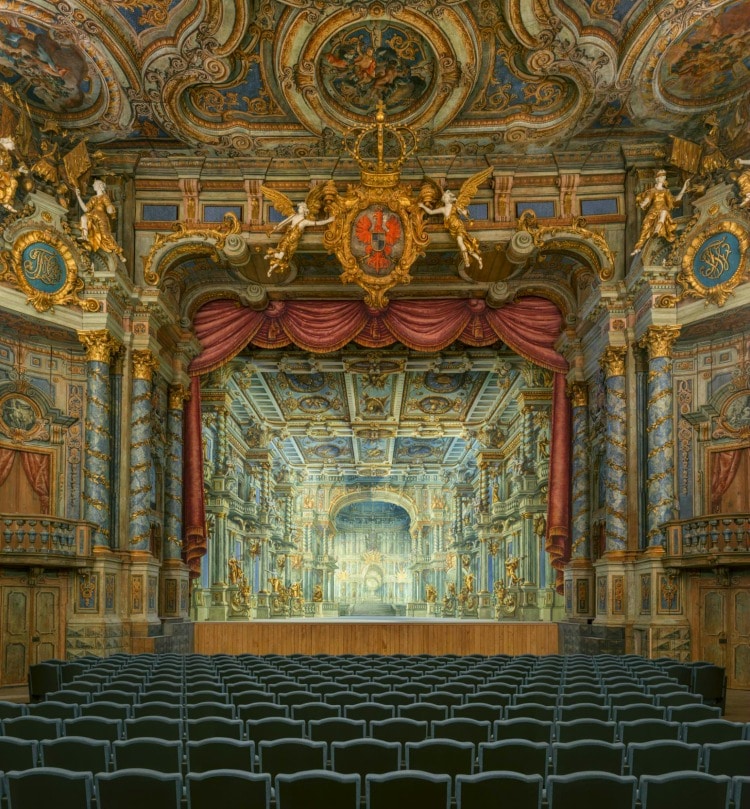
Margravial Opera House
No visit to Bayreuth is complete without a visit to the Markgräfliche Opernhaus which was built for the lavish festivities surrounding the wedding of Wilhelmine’s only daughter, Elisabeth Friederike Sophie, and Duke Carl Eugen of Württemberg in September 1748. Unsurpassed in its perfection, it is Wilhelmine’s proudest legacy. The most beautiful 18th-century baroque theatre remaining in Europe, it was built by famous architects Giuseppe and Carlo Galli-Bibiena. Still used for performances, the structure is made completely of wood and the lavishly carved and painted decoration is like no other in the world. In 2012, the Opera House was inscribed on the UNESCO World Heritage list and is open daily to visitors.
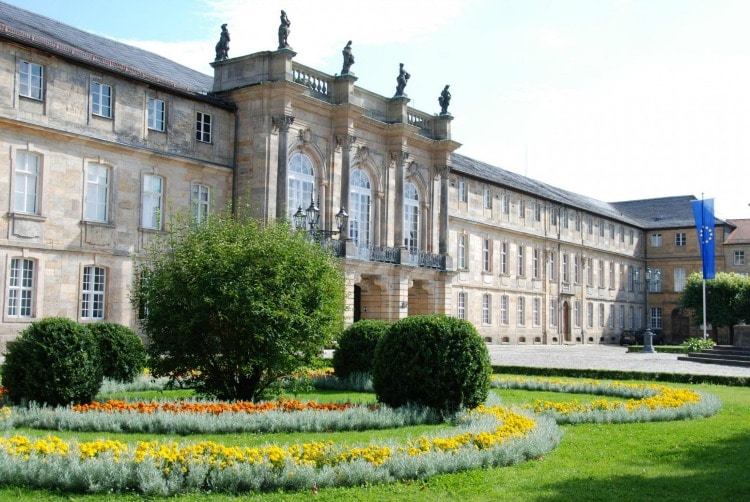
New Palace and Court Garden
Built from 1753 on, the New Palace is unique for the unusual design of its rooms. The Trellis Room, the Broken Mirror Cabinet and the Palm Room, thought to be the oldest Freemason temple in central Europe, are masterpieces of Rococo architecture. The Bayreuth faience collection, the Margravine Wilhelmine Museum and the Bavarian State Gallery collection, which is comprised of German and Dutch 17th and 18th masterpieces, are all well worth a visit. And the spacious Court Garden adjoining is filled with fountains, artificial islands, and Baroque statues.
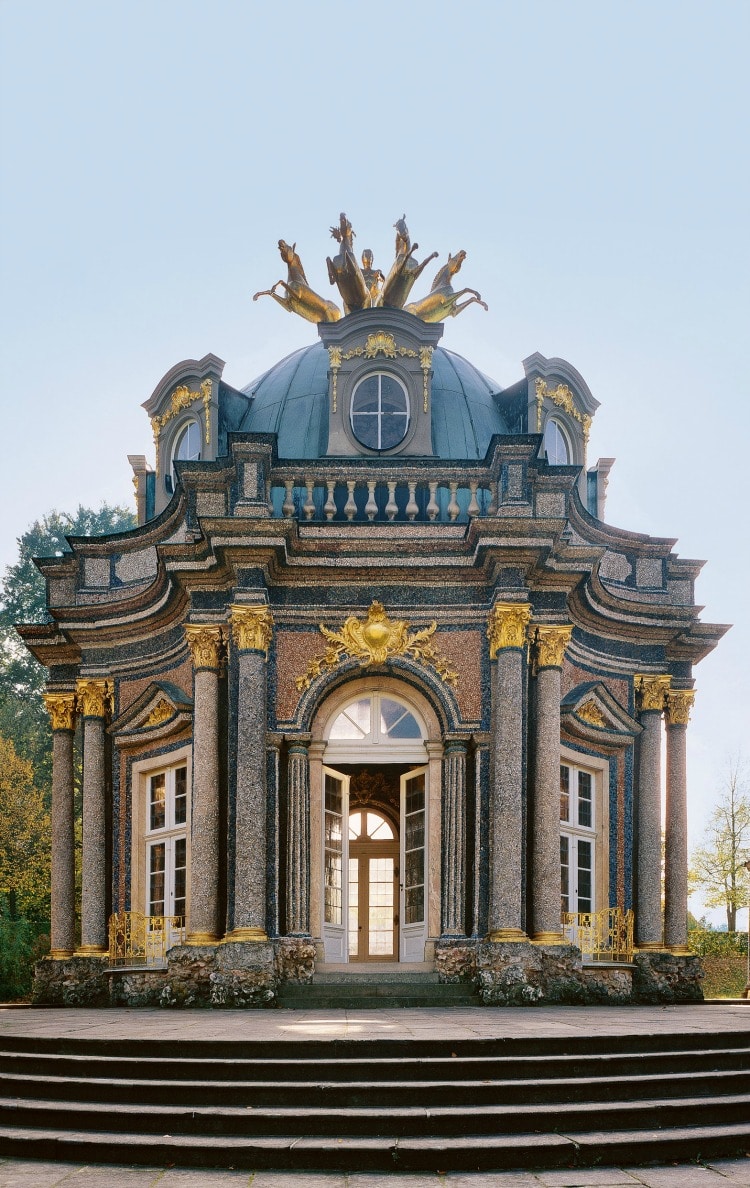
Hermitage
After Margrave Friedrich gave the Hermitage Bayreuth to his wife in 1735, she immediately began changing the impressive palace and created a jewel of Rococo architecture. She significantly enlarged the original building, adding new rooms including a Music Room, a Japanese Cabinet, and the Chinese Mirror Cabinet, where she wrote her celebrated memoirs. She then had the new palace, Neues Schloss, built in a horseshoe shape with mosaic-encrusted arcaded wings. The centerpiece is the sun temple with a statue of Apollo riding a chariot led by four magnificent steeds.
Fantaisie Palace and Park
The Roman villas that Friedrich and Wilhelmine admired on their trip to Italy in 1755 were the inspiration for this palace completed after 1763 by their daughter, Duchess Elisabeth Friederike Sophie von Württemberg. At a later stage, Germany’s first garden-art museum was added which now features an exhibition of rare artifacts, displays and short films showcasing the history of central European garden art.
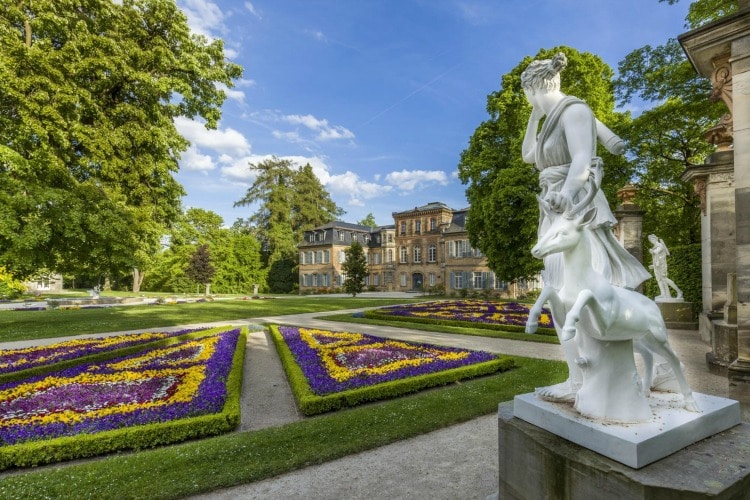
Sanspareil Rock Garden
A literary garden, Sanspareil is dominated by unusual natural rock and cave formations which Wilhelmine named after places in the French novel “Les Aventures de Télémaque”, such as Grotto of Calypso, the Temple of Aeolius and Vulcan’s Cave. The name of the park dates to 1746 when at the sight of the rock garden, a lady at the court is said to have exclaimed, “Ah, c’est sans pareil!” – “It has no equal!”.
Beer City Bayreuth
While Munich is commonly thought of as Germany’s beer capital, the people of Upper Franconia know otherwise. In fact, the entire Franconia region has the highest density of breweries per capita in the world with a thousand different beers produced at over 200 breweries.
For insight into the history of brewing, Maisel’s Beer Adventure World, listed in the Guinness Book of Records as the world’s most extensive beer museum, is the best starting point. Situated in a historic brick building that previously housed a brewery, the “Bier-Erlebnis-Welt” provides a comprehensive view of the traditional Franconian art of brewing. At the Brauwerkstatt, visitors can watch master brewers at work and learn about the craft brewing process from the malt mill and brewhouse to the fermenting cellar and wood barrel aging.
Highlights in the museum include two large cabinet vaults showcasing over 5,500 beer glasses and mugs, 400 rare enamel signs from various breweries and brands as well as an impressive collection of coasters.
After the 1-hour tour, the adjacent Liebesbier pub tempts the thirsty with more than 100 different craft beers. Enjoy the very best of Franconia and Prost!
[alert type=white]
Find Out More: www.bavaria.by
Also:
[/alert]

